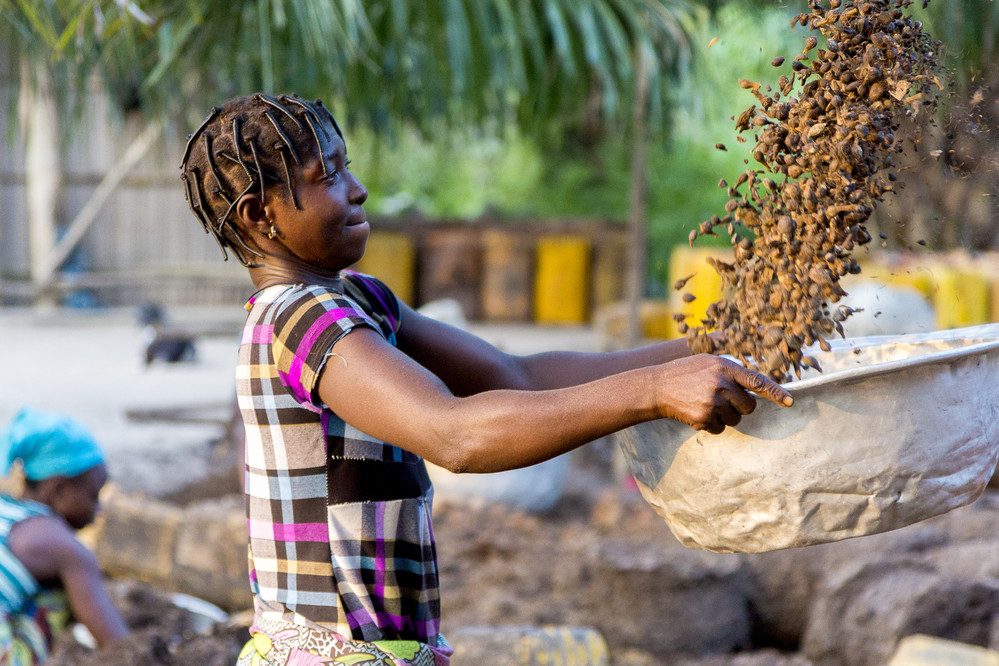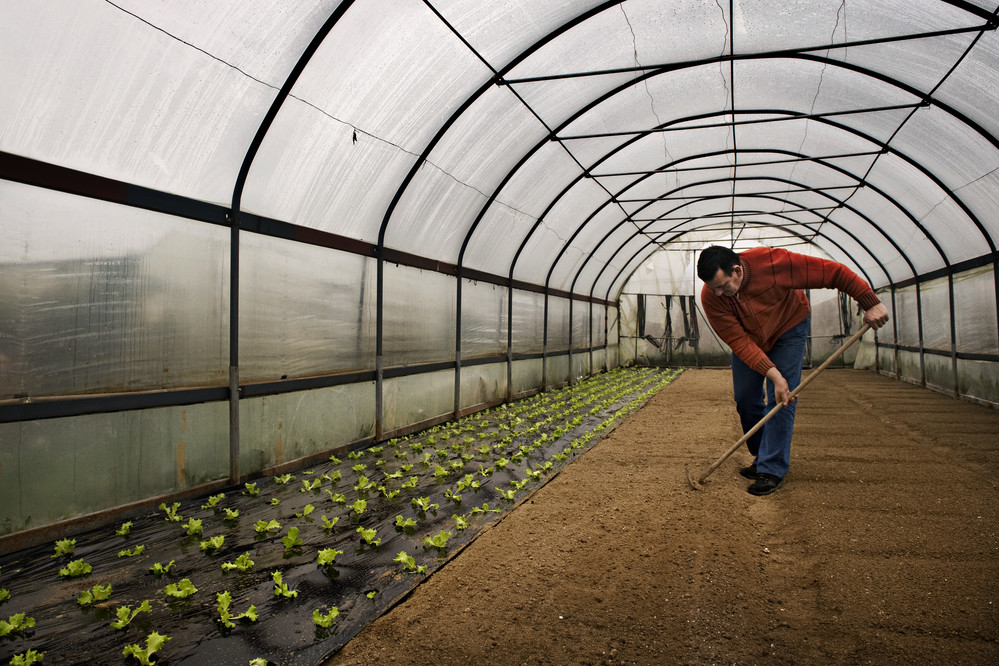How the private sector is powering transformation.
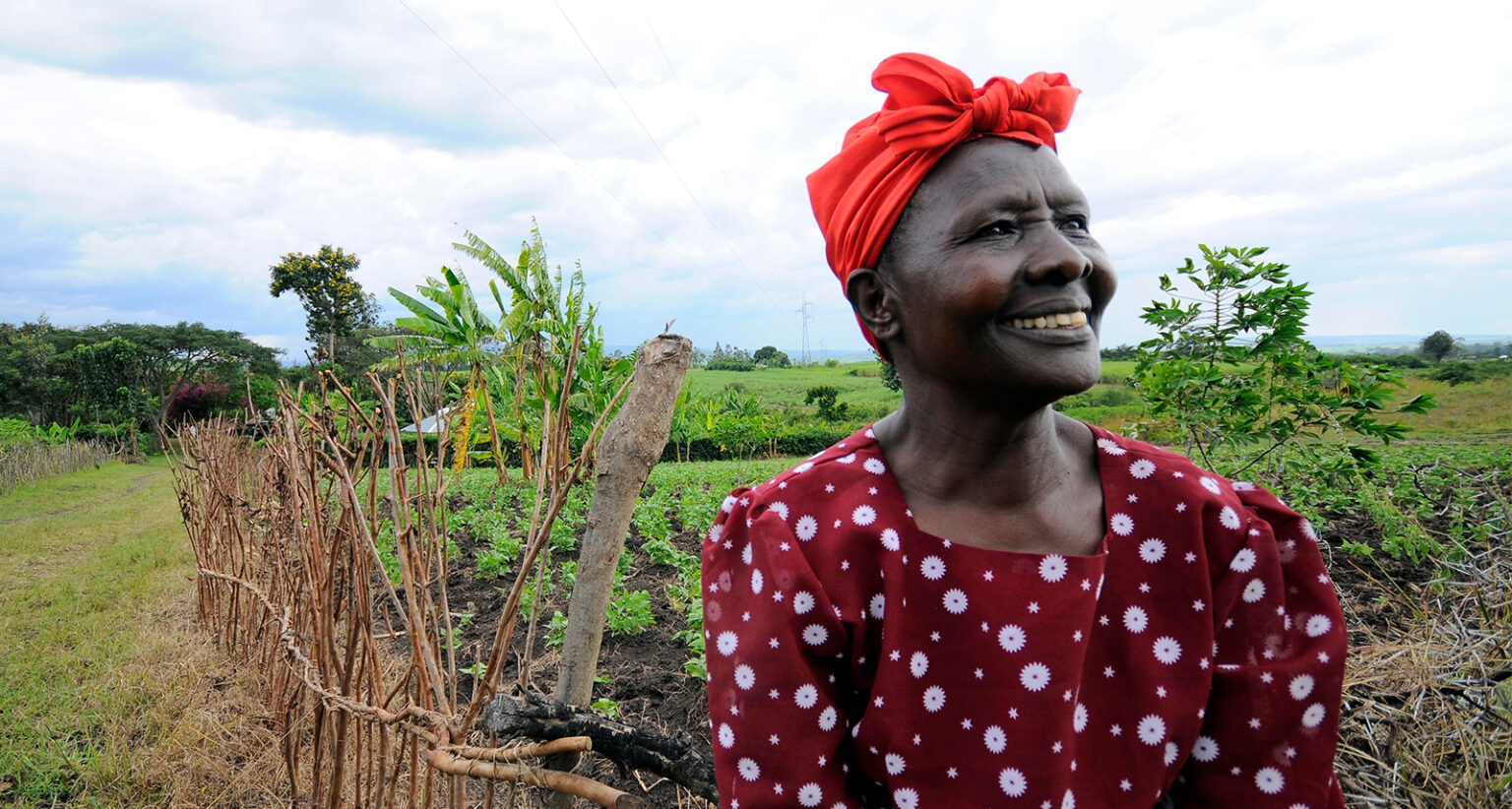
Photo: International Center for Tropical Agriculture (CIAT)
Kenya’s “Vision 2030” plan charts a path toward an economically sound, sustainable future—and bringing that future within the reach of all Kenyans will depend on how easily they can access the tools they need to build their businesses and improve their quality of life. But access can take many forms. For small business owners and entrepreneurs, access to finance is key to growth. City dwellers need access to affordable housing so they can raise families in neighborhoods near job opportunities. Farmers rely on access to agricultural markets so they can sell their food while it’s still fresh and receive prompt payment. And all will require access to digital platforms as Kenya establishes a diverse and dynamic economy.
Progress toward many of these goals is already significant, according to Amena Arif, IFC Country Manager for East Africa and Malawi. “Kenya has undertaken important political, structural, and economic reforms that have driven economic growth over the past decade and will continue to do so in the years to come,” Arif says. “By facilitating access to new markets, Kenya’s private sector can power the economy forward during a post-pandemic recovery.”
That development has the potential to influence the region. Because Kenya is the largest economy in the East African Community, accounting for 47 percent of the region’s GDP, several other countries can benefit from “spill-over effects” of Kenya’s growth agenda, according to Jane Mariara, Professor of Economics at the University of Nairobi and the head of the Partnership for Economic Policy.
“Kenya is the gateway to East Africa and has pioneered many initiatives that other countries in the region have and will continue to tap into” Mariara says.
The stories below spotlight four Kenyan companies that are helping to expand access to the markets and tools Kenyans need as the country pursues “Vision 2030.”
Access to finance
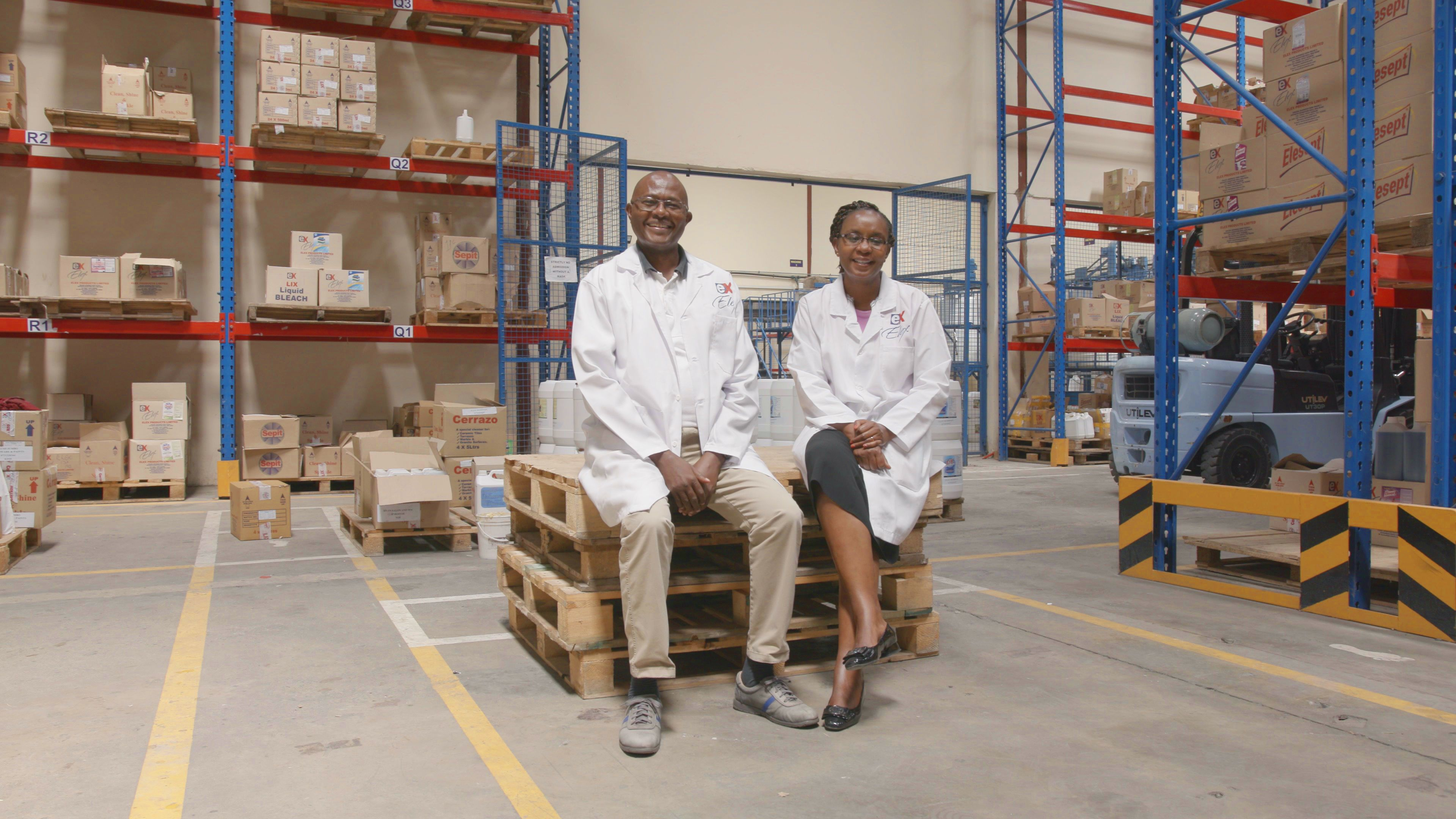
Photo: Elex Products
Gabriel Muli and Ruth Muindi, cofounders of Elex Products. Photo courtesy: Elex Products.When COVID-19 hit Africa, Gabriel Muli and Ruth Muindi were prepared—mostly. Muli and Muindi, the married cofounders of a Kenya-based company that manufactures and distributes cleaning and sanitation products, had been tracking the pandemic’s spread throughout Asia and Europe since the first headlines about the virus. “We knew Africa was next,” Muli says. In response, their company, Elex Products, created a new product line of hand sanitizers and ramped up production of disinfectants.
Their prescience paid off. When the first COVID-19 case was announced in Kenya, hand sanitizers were sold out within an hour; customers started lining up outside the Elex Products factory daily at 5 a.m. The corporate team adapted fast to demand—establishing mobile money channels so customers could pay electronically, and shifting from in-person product demonstrations to social media advertisements.
But Elex Products was unprepared for the cost of these changes and others—like the need to build a new, larger warehouse—and it needed access to financing so it could expand to meet demand. Elex Products’ application for insurance finance was approved in just three days by Co-operative Bank of Kenya (Co-op Bank), and because the bank was so proactive, “We were able to adapt our business practices and make quick decisions,” Muli says.
For Co-op Bank, which helped Elex Products expand at a critical juncture, outreach to small and medium enterprises (SMEs) is a priority, says Moses Gitau, Head of Business Banking. The bank doubled its efforts during the pandemic by increasing online engagements with its SME customers. “We reached out to our customers to determine what support they required to weather the pandemic,” Gitau says. Since the pandemic posed so many new challenges to small enterprises—but prevented meeting in person—Co-op Bank conducted over 40 webinars in 2020 and 2021 to help its SME customers navigate the crisis.
The bank’s guidance on gaining access to finance kept Elex Products’ growth on track, Muli says. Today, Elex employs 54 full-time local staff (about half of whom are women), 30 part-time staff, and partners with 600 pop-up vendors.
IFC and its Global SME Finance Facility (GSMEF) has offered support to Co-op Bank for 10 years. Throughout the partnership, IFC has helped the bank conduct market assessments and focus group workshops to determine how to better serve its clients; produce data analytics to better shape the business; and create non-financial services. This has helped Co-op Bank gain 130,000 new SME clients since 2018. IFC advisory work has also helped Co-op Bank move most transactions to alternative channels outside the branch offices.
Funding from the GSMEF is supported by the governments of the Netherlands and the United Kingdom. IFC has also provided $290 million in financing to Co-op since 2016 to support the bank’s SME lending and trade program.
Access to affordable housing

Photo: Kennedy Oloo
William Malalo at his new home in Ngara, about 3 km north of Nairobi. Photo by Kennedy Oloo.For William Malalo—who grew up in a Nairobi house so cramped that eight families shared one shower –access means something different: a private apartment with an ensuite bathroom.
When Malalo and his wife, Vera Otieno, first found out about the government-sponsored program that helped them purchase their own place, he thought it was too good to be true. For his entire life he paid too much in rent for too little in return, he says, and homeownership seemed like an unattainable dream. Short maturity terms and high interest rates had long discouraged him and many other low-income earners—even those on steady incomes—from applying for long-term financing.
But Kenya is improving mortgage affordability and increasing the number of borrowers. Malalo and Otieno qualified for a rent-to-own program with a flexible repayment plan through a program offered by the Kenya Mortgage Refinance Company (KMRC), licensed by the Kenyan government in September 2020 with support from IFC and the World Bank. Long-term funding from KMRC allows financial institutions to provide affordable home loans with long maturity. KMRC-backed loans are cheaper than the prevailing market rates, and more than 300,000 Kenyans have already signed up to be considered.

Photo: Kennedy Oloo
Vera Otieno's room now has space for a desk, enabling her to work from home. Photo by Kennedy Oloo.That’s significant in a country that is 2 million units short the number of affordable homes needed. With rapid urbanization, the deficit is growing by 150,000 units annually.
Once the Malalo-Otieno family saved up the 12.5 percent minimum contribution for a three-bedroom apartment, they became homeowners. In May of 2021, William, Vera, and their four children moved into the Park Road development in Ngara, about 3 km north of Nairobi. Access to mortgages like those from KMRC is key to expanding Kenya’s affordable housing sector, according to Charles Hinga, Kenya’s Housing and Urban Development Principal Secretary. “We’re now seeing the market turning,” Hinga has said.
IFC's $2 million investment in KMRC in 2020 is helping to increase access to affordable mortgages and support home ownership in Kenya.
Access to agricultural markets

Photo: Twiga
Markets are on Peter Njonjo’s mind, too. Njonjo has big goals: he aims to supply Africa’s growing urban population—projected to double over the next 25 years to nearly 1 billion—with high-quality, affordable fresh and processed food. He started by zeroing in on the food supply chain and distribution process, which was partly to blame for why food cost so much. In 2014, Njonjo cofounded Twiga, a B2B e-commerce company that aims to modernize Africa’s urban-based informal retail through technology that transforms the value chain for fresh produce and manufactured goods.
Providing farmers with direct access to reliable retailers and new markets—and removing the need for middlemen—leads to increased incomes and “spurs further productivity and linkages between agriculture and other sectors,” says Mariara, of the University of Nairobi and the Partnership for Economic Policy.
IFC first invested in Twiga in 2018 with the support of the Global Agriculture and Food Security program. Twiga has raised $113 million from investors, including IFC, and plans to expand into East and West Africa throughout 2022. As Twiga expands, it is developing a plan to grow its fresh produce under the Twiga brand, using precision agriculture and satellite imagery to increase productivity. It plans to start selling the domestic crops beginning in February 2022 across East Africa.
Connecting Kenya’s formal and informal sectors in this way helps the country meet broader, long-standing national goals. In Kenya, larger formal businesses produce the bulk of economic output, but micro and small enterprises in the informal sector employ most working Kenyans. As a result, there has been a significant productivity gap with the formal sector, as IFC has found.
Now, new possibilities for the agriculture sector are being facilitated by Kenya’s position as a hub for financial and digital services. These innovations in digital infrastructure create important advantages—especially because the agriculture sector has grown even more robust during the COVID-19 pandemic.
Access to the digital economy
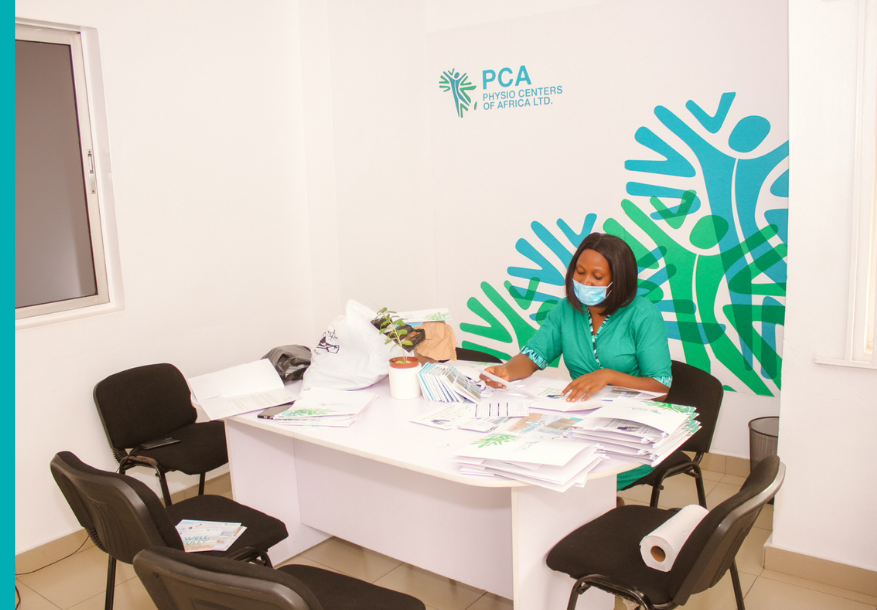
Photo: Ajua
“Phenomenal.” That’s how the World Trade Organization (WTO) describes the growth of digital trade and digitally-enabled transactions in Kenya. “Digitization has become an integral part of numerous day to day activities and service delivery,” the 2021 WTO analysis notes, finding that increased access to and use of information and communications technology is at the “heart of growth” in Kenya.
Tech companies in Kenya are also reaching beyond borders to offer their tools, services, and expertise to small-and-medium-sized enterprises (SMEs) across Africa that need to access the digital economy.
“SMEs don’t have IT departments or advanced tools like larger businesses do, but they still need a presence on the Internet to reach customers beyond those who walk in the door,” says Kenfield Griffith, founder and CEO of Ajua, a plug-and-play platform that offers SMEs the ability to create an online presence for their business, advertise to target audiences, and capture critical customer data. Ajua is headquartered in Nairobi, Kenya.

Photo: Ajua
Griffith realized in 2018 that small African firms' best chance of growth depends on engaging with customers online. That’s exactly what Physio Centers of Africa needed in order to expand its customer base beyond daily foot traffic. The Lagos-based physiotherapy and rehabilitation business also wanted to recruit more trainees and increase the number of referrals from medical providers. Ajua enabled Physio Centers of Africa to build a web and social media presence so the company could interact with new audiences, use data to shape services tailored to the firm's needs, and scale the business. Ajua also helps clients interact with social media advertising on platforms such as Facebook and Instagram, even if they don't own an account on these platforms. With Ajua’s tools, Physio Centers of Africa reached over 58,000 people in just 48 hours.
Typically, the hurdles for African SMEs to automate and access new markets are daunting. Issues related to cost, infrastructure, and technology expertise slow down business growth, according to Griffith. “But 50 percent of Africa’s GDP is driven by small-and-medium-sized businesses, so if we solve this problem, we’re changing the economy across the entire African continent,” he says.
Analysis conducted by IFC and Google in 2020 found that Africa’s Internet economy has the potential to reach $180 billion by 2025, accounting for 5.2 percent of the continent’s GDP. By 2050, the projected potential contribution could reach $712 billion, 8.5 percent of the continent’s GDP.
Ajua’s expansion is supported by IFC through IFC’s investment in venture capital firm TLcom’s TIDE Africa Fund. The company’s growth helps meet one of the goals outlined in Kenya’s 2019 Digital Economy Blueprint, which champions the growth of an Africa-wide digital economy. Supporting digital innovations, the report said, can facilitate transactions and spur trade, which translates into improved and efficient business environments, increased accessibility, connectedness, and better standards of living.
These large-scale benefits drive Ajua’s efforts to offer African SMEs a way to shift their businesses online. “When you bring more revenue into the digital ecosystem, you’re helping provide school fees for a child, health care for a family, and employment for other businesses that are in the vicinity of an SME,” he says. “When more people are hired, you have the opportunity to create a diverse workforce. There’s a huge, huge impact.”
This article was originally published by IFC.
